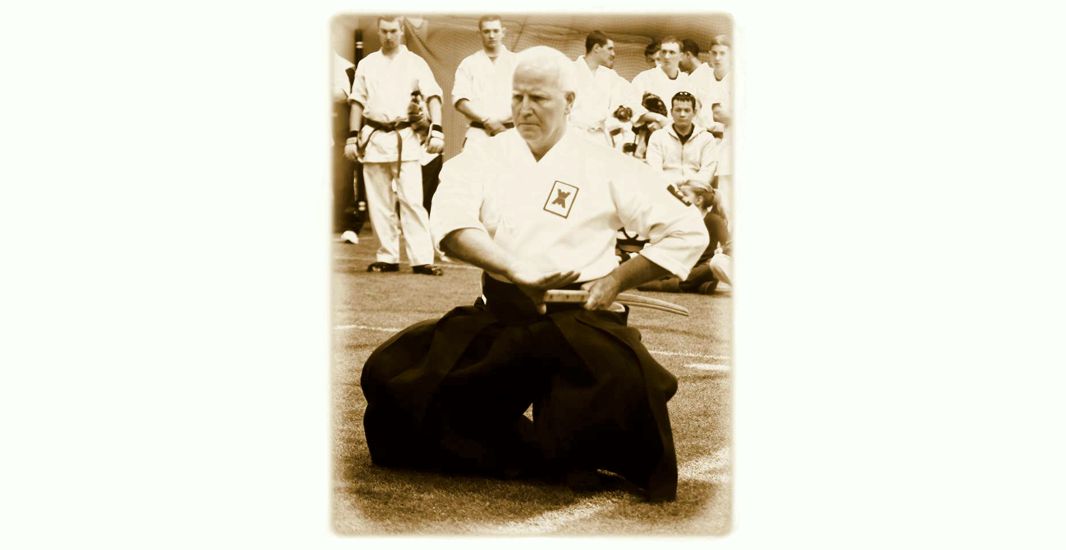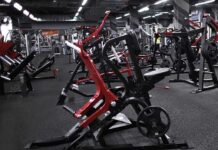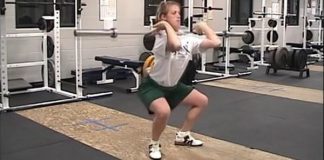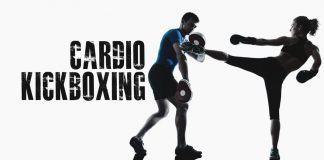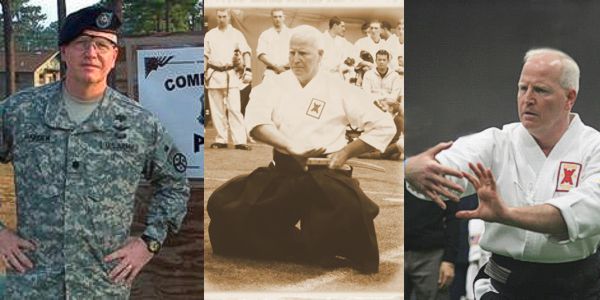
Physical Development and Training
I like to approach training as a concept with stages which I think in a detailed and outlined fashion, can be adapted for any martial warrior, competitor or martial artist. There is a Zen concept regarding the stages of a student’s knowledge. Initially we enter a dojo and we do not know that we do not know anything (stage one). Then we realize how much we do not know (stage two). We start training and at some point we consider ourselves proficient (stage three). Then we experience a different approach to martial concepts and arts. We realize that we do not know as much as we thought (stage four).
Generally at stage four, humility and acceptance of our limitations occurs. That mind set is a sign of wisdom. We often refer to these students as masters. They refer to themselves as lifelong students (just a little further down the path). The Japanese term used is “Sensei”, not a teacher as is commonly thought but literally translated as “one who has come before” on the path, or “Do”, the way. Their way is not the only way. This is just one example for students and soldiers to study and emulate. The concept of “Jiki shin kore dojo” is ever present as a martial warrior. If the mind is right, everywhere can be a dojo or a place of the way.
Training must start somewhere, so I like to start with a discussion of cardiovascular training. Certainly the idea that we need to have solid cardiovascular fitness is important. Running, jogging, sparring, skipping rope and numerous drill sets can be applied in many ways as a part of your training to achieve this basic level of cardiac fitness. It is a starting point for self-development and growth. It is a personal challenge that applies what I call “internal discipline” In other words, do you train when no one else is telling you to?
The keys to cardiovascular training lie in three aspects; intensity, length, and diet. Generally speaking, with the correct intensity, a ten to twenty minute cardiovascular training session can and will trigger a cardiac benefit. The formula used in medical realms is the maximum physiological heart rate formula, or two hundred and twenty minus your age. Then exercise at sixty to seventy percent of that total number. In other words, I am in my mid fifties and my maximum predicted heart rate would be around one hundred and seventy beats per minute. I cannot sustain that without severe risk and strain so a safer “training” level is a target heart rate of around one hundred and ten to one hundred and twenty. This is also dependent upon your intended environment and purpose. Are you climbing into a cage for some “fun” or going to war with a special operations team, at altitude in Afghanistan. Either case you may want to push it up a notch or two.
Proper diet is not something that would be in the scope of this article but certainly following some common sense rules would apply. Watch the saturated fats, consider a supplement of fish oil omega III fatty acids and certainly balance your diet with appropriate protein, carbohydrates, minerals and vitamins. Avoiding junk food and processed foods and focusing on fresh healthy vegetables, meats, poultry and seafood are paramount. In our society, and even in Japanese society, cancer and heart disease are rising and most agree that it is dietary and environmentally related. Many great instructors have died at relatively young ages because of too much alcohol, tobacco, or poor dietary habits. So learn the life lesson of “moderation in all things”. Think about what you are putting into your body. Often what you eat can make all the difference in how you feel, function, and perform. Enough said. If you want to know more about proper diets ask your mom or a dietician.
Another part of the cardiovascular portion of the training includes what is referred to as “core temperature”. It is a product of cardiovascular exercise. You want to bring all the extremities up to core temperature in order to reduce the risks of musculoskeletal injuries and strains. By sweating, you assure that this level of “warm-up” has been achieved. At this level you can move into some passive movements that do not over extend active range of motion and get the body ready for the main portion of your training. This is sort of the “crawl phase” of the crawl, walk, run training regimen. After we do some passive movements in rehearsal, generally most styles do some form of flexibility or stretching. We will review several concepts that are borrowed from physical therapy protocols and athletic training.
Stretching:
The idea behind stretching is to prepare the musculature for the extreme and sometimes odd positions and ranges of motion that we are asking our bodies to perform. Certainly, some of the movements done in tae kwon do and other kicking arts require a high degree of hip and leg range of motion. Aikido and ju-jitsu skills require varying degrees of wrist, elbow and shoulder range of motion. Again this harkens back to the initial introduction statement, it depends on your activity as to “how you train”.
Flexibility drills can be broken up into sets and sequences. Generally there are categories of stretching that each have advantages and detractors. Ballistic stretching generally involves a bouncing or moving action to take the musculature beyond its normal active range of motion. That is what you want but it can trigger fibrous changes that in time have been shown to actually reduce range of motion if you push it too far. Next are static drills which involve going through a range of motion and holding a position for ten to fifteen seconds in order to allow the muscle group time to relax by fatiguing the pressure sensitive proprioceptive centers in the muscle groups. This is a preferred method of stretching because it is safer but the gains in flexibility are generally slower. Also, instructors may want to take note of the student tendency to hold their breath during prolonged stretching. This is not productive for your students. Ensure they are breathing and relaxing during these exercises. Iyengar yoga emphasizes continued breathing while stretching and Yoshinkan Aikido takes it to another level in referring to breath or “kokyu” as cleansing and nutritional. Certainly as a health care professional I will advise you to keep breathing! We will talk more about this training topic and “how” to breathe later on.
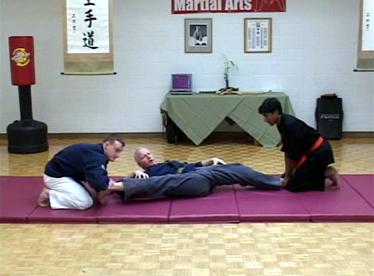
Next up on our stretching discussion is dynamic stretching. It involves movement through ranges of motion that mimic the movements you plan to do. An example common in kicking styles is the leg-swing, to mimic a front snap-kick. Many systems emphasize slowing the speed of the techniques in order to recruit muscle fibers, build strength and stimulate better balance and awareness.
There is also stretching that includes a partner or what we refer to as “partner assisted stretching”. It is both good and bad, yin and yang as it were. The good thing about partner stretching is that your partner does not know how far to take the stretch and often he can go beyond your normal range of motion, which helps your flexibility. The bad thing about partner stretching is that your partner does not know how far to take the stretch and often he can go beyond your normal range of motion, trigger a strain and reduce your range of motion.
The take home message I inject from more than forty years of training is “know your partner well and talk to each other”. Much like a tap-out in Yoshinkan Aikido or Ju-Jitsu, your partner needs to know when you reach the limit or he will likely take you beyond it and generate an injury. Injuries trigger scar tissue which rarely regains the same elasticity as normal healthy tissue and can always predispose you to further injury down the road as well as further reductions in range of motion and flexibility.
Finally, we can talk about “PNF” or proprioceptive neuromuscular facilitation…what? This type of stretching was introduced to me during the 1996 Atlanta Olympic Games. I had the privilege of working as a health care provider for the “ladies field hockey venue” and this was a method of warm up stretching and conditioning done at the Olympic level to improve range of motion and hopefully performance. The idea is basic. You go through your stretching range of motion until it feels tight and at its peak. At that point you apply mild resistance to the stretch in the opposing direction. This loads the muscle receptors without really changing the position of the limb. After fifteen seconds the muscle can then be relaxed and you can then move it beyond the previous maximum range. Certainly this and all stretching should be done with caution but the concepts, when done properly, will improve your range of motion and reduce the risks of injury.
Mental Preparation:
Misogi: This concept of breathing exercise and body purification dates back to the days of the Samurai. Each time we exhale, we rid the body of carbon dioxide, which is actually the largest metabolic waste product. Human beings tend to get rid of more waste metabolite through breathing than through any other form of elimination. The idea that breathing calms the psyche is also ingrained in martial teachings. An Isshin-ryu kata called “sanchin” uses dynamic tension and dynamic breathing skills to generate power, muscle tension and focus. In one small study conducted by Salisbury State College on the eastern shore of Maryland, the performer (me) was able to demonstrate medically reproducible improvement in lung capacity. I never pursued the study any further but I have often thought there may be a link to improved lung function through the application of martial skill sets. I just have not found an emphysema patient who could do Sanchin kata…I’m waiting.
The mind-breath link occurs automatically in some efforts. For instance, prior to lifting a heavy weight, most people will take in a deep breath for power, what might be called Ki focusing. Deep cleansing breaths should be done prior to and after each work out. Muscle control around the abdominal region by “belly” breathing also helps to improve oxygenation percents. Oxygenation actually improved and was determined by pulse oximetry, which is a method of measuring blood oxygen levels. In certain styles, particularly some Aikido styles (Yoshinkan, Aikikai, and others), kokyu nage or “breath throws” are part of the training. The breathing is a major part of the relaxed manner of the execution of these throws. Controlled relaxed breathing allows for better unity with your “Uke” (Aikido for partner…we don’t really have opponents) and flow with the energy offered by your attacker.
Aikido instructors like Morihei Ueshiba and Yoshinkan founder Gozo Shioda Soke and others, were and are very skilled at summoning breath power. In most modern martial art systems, this is touched on but not really focused or well understood. I often enjoy listening to my Yoshinkan Aikido instructor; Kevin Blok Kyoshi, tell stories of how his instructor, Gozo Shioda Soke would throw him, with no apparent effort. “The power was phenomenal”. Sensei Blok in appearance is more like a lumberjack…a big guy. So it is amazing to hear about a small gentleman of five feet and one hundred pounds who could summon such power. It is an interesting skill set “the intent of the trained response, the union of mind and body”, relaxed and pliable, even Tai Chi like in nature…very similar in its spirit and action but ultimately powerful.
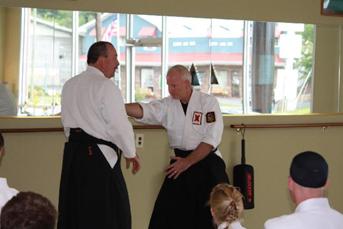
One personal experience with breath control is related to an occurrence while treating a wounded soldier in direct contact with insurgents. Controlling my breathing allowed me to focus, correctly (and quickly) finish a procedure and clear the area with my patient and myself intact. Martial skills have innumerable uses. This is just one example of many from my own background as a soldier who luckily was also a martial artist.
Meditation
Meditation is a process of practice. Learning to calm the mind, control the breath and focus the energy immediately, and at will, are the goals of this training. Many students use meditative periods to mentally review skill sets prior to training. To go over techniques, form patterns, locks, pins, traps, and kicks are certainly useful in a meditative state. Also, mental rehearsal of various attack scenarios helps you to accept and respond quickly to real world scenarios. Colonel Rowe used to note the “amazing amount” of material and memories that a person can call upon when in isolation or captivity to help keep their sanity. By focusing on these memories while in deep meditation, it was possible for Colonel Rowe to relive many more pleasant aspects of his life while still in captivity. In essence, he was able to escape from the reality of a Vietnamese POWs’ existence and go home in his mind. Not a bad skill to have and it is one that is martial related but given little attention generally.
Meditative processes should begin and end with breathing and breath control. Focus on the timing and the rhythm of your breathing. Breathe more with your abdomen in order to “pull” air rather than suck air into your lungs. With each exhalation you should try to relax the tension in the musculature while maintaining appropriate posture. It is not necessary that you sit in seiza or zazen unless you choose to do that. You can meditate flat on your back but “it often makes one fall asleep” not the goal but at least one is relaxing. Next, focus on a specific goal and task and then concentrate on that action in a repetitive fashion. Meditation and relaxation drills release endorphins and stabilize many biochemical processes that we really do not understand yet. Certainly, certain neurotransmitters can be increased with biofeedback, a form of the meditative process. Again, this is a martial skill set and often ignored because it is “traditional” and not a current trend. Traditional warriors dealt with life and death. Perhaps we should pause before we eliminate it from our training regimen labeled as “not useful or productive”. Again our opening theme, “It depends on your environment, intent, and purpose; all martial art is useful in the right context”. Certainly these skills would seem paramount in anyone’s training regimen.
Balance Drills.
Martial skills are often divided into ranges and or distances. These distances can rapidly change and with that change, the situation and applications change. Martial warriors must be versatile and adaptive. In the military we often prepare a battlefield with long reaching attacks. Air attacks through bomb runs or artillery are preparatory against larger established enemies. Today’s warfare is asymmetric and fluid with no standing armies. Again your situation dictates the approach. Tae kwon do with its long range kicks and dynamic aerial skills are generally effective for distance attacks. The practitioner needs stability and so the concept of balance drill is introduced.
Leg extensions can be done in a neutral posture. Standing with your focus on one spot and going to full extension on a snap kick, side kick, or round house kick are excellent drills. Holding these extensions for ten to fifteen seconds forces the toes to counter and shift balance points. In time, the toes and feet develop a sense of “purchase” and feel your feet grip the floor. Since you are generally on one foot in most kick skills, this sensation is important to establish. For me personally, the toes take on the same sensation as your hands do when grabbing or holding something. Centering is a concept of controlling your centerline and therefore your center point, your balance. I like to flex my supporting leg slightly and again “feel” the weight of my body over the supporting leg. Also, that weighted leg flex will reduce the risk of destabilization and even knee injury if you are jammed. Additionally, the concept of “rotational drills” is important to a kicker in that it takes the hip adductors and abductors through various positions and constantly shifts balance points which again must be “felt” by the practitioner. Balance and stability are such key elements for a kicker. These types of drills should be incorporated into any long-range game.
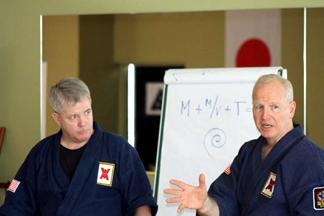
Also, we teach what I call quick reflex drills. These can be done in a “fancy sideways fighter” position or a neutral stance if you prefer. These also improve balance and positional awareness, related to situational awareness. You execute skip sides, round and hook’s, shifting left and then right and rotating while doing the drills. In essence by exercising the left and right legs with a rapid turn in between students learn transitional skills. Do these quickly and without pause because of the forced sense of balance and focus. These rapid shifts and movements help linear fights transition to a more fluid approach. Linear fighters “tend” to be tournament like, in that they attack well in only one direction…forward or back. Some of the better point fighters have a natural fluid circular motion to their attacks and counters. To coin a term from Aikido “spherical movement in response to an attack allows you to blend with the person”. This is less damaging and less confrontational, which again, based on your environment, may be applicable. Certainly turning and scanning your surroundings are easier to do when you avoid in a circular fashion, just keep your balance while doing it. Situational awareness is also improved. Most attacks in the street are combination attacks, planned out or at least rehearsed with a distraction and assault. Balance is more than just standing on one foot. Mental balance and awareness are improved through these drills.
One final leg drill, static leg drills done on the wall or on a stretch bar are tremendous for helping balance development and leg strength. Additionally, the student’s musculature will over time development positional awareness or what some people call muscle memory, a very important concept. At a basic level the Japanese term “Mushin” or “no mind” is a concept of muscle memory. Certainly, it is much more than just that but the idea is to be repetitive on skills and eventually you function in automatic mode “no thinking or watching the TV in your head” Try three sets of five repetitions of snap kicks, round kicks, hook kicks and of course sidekicks. If these are new to you then you will use muscles you never knew you had!
Other Training Concepts:
Often by focusing on skills that are not strengths in a particular style or in your own repertoire, you can develop more of a balanced approach. For example in a crowded room full of people, it may be nearly impossible to launch various kicks so tae kwon do stylists must rely on hand skills. I like to focus on hand drills prior to throwing any kicks at all. Using the speed bag, double ended striking ball, heavy bag, and doing traditional blocking exercise all help to emphasize the hand training. In my base style of tae kwon do, hands skills generally tend to take a back seat to legs drills.
Being able to transition from the various ranges of fighting with seamless changes blends your martial skills into a cohesive unified approach. We should be able to flow smoothly from a kick to a punch, a punch to a grab, a grab to grappling, and finally grappling to the ground – and then recover your stance. I like to emphasize that students train in long range; intermediate range, close quarters, grappling and ground fighting. From my personal experiences, a grounded fighter tends to lose situational awareness. The person you are grappling with may have partners who will also be attacking you. A grounded fighter loses mobility rapidly and it is difficult to recover mobility. Aikido and Ju-Jitsu both teach break falling and recovery skills that emphasize re-establishing your stance, mobility, and situational awareness. According to Sun Tzu, “when a man or an army looses mobility, they give the advantage to the mobile attacker”. In the book the “Art of War”, many lessons can be learned and used for sparring one on one or for using an entire army properly. If you have not read this text it should be in your library.
In order to mitigate a multiple opponent attack, include multi-opponent drills to learn to apply various tactical strategies. Channeling can be done in a parking lot by running between two cars. This has the effect of momentarily stacking your opponents up and reducing a multi opponent scenario to one on one. Generally, attackers will have an observation point to look for targets and victims. Understanding observational tactics can be very useful. Using windows to check reflections and looking for avenues of approach when you are in new areas are always good ideas. What are the most likely attack zones? What is the most deadly? Looking for cover and concealment areas can afford protection and offer terrain advantages. Looking for key terrain features can offer tactical many advantages. For martial artists some of the European texts on the older theories of fencing and swordsmanship are excellent studies in weapons use and strategy. Deceptive penetration, set points, leading centers, activation points and many other sparring concepts have their roots in sixteenth century fencing texts. Interestingly, the late Bruce Lee was an advocate of such esoteric methods. Many or all of these concepts have been reviewed in great detail by some of the most World renowned martial arts legends.
Again, the idea of this brief discussion on training is to look at some of the more traditional methods we too often ignore. It is not a primer on Aikido training or Tae Kwon Do training but is meant as an adjunct to the training you are already doing regardless of your style or activity. Each individual style has its own focus and approach. The bottom line is to balance what you learn and get skill sets from all the various ranges of attack and defense. When these are appreciated, you will understand better how to defend against numerous attacks, blend the various ranges more fluidly and do so without losing situational awareness. Finally, by adding some of the traditional focus on the whole person with meditation, breathing drills, and relaxation; many martial artists and even soldiers will see the value of the traditional concepts. Misogi, or body purification, very much included the mind and body as one.
In closing, I want to mention the concept of “zanshin”. It is the idea of spirit and the projection of energy. If you understand the basics and have trained long enough and hard enough, you will begin to read positions, stances, and intent. Often these very subtle clues are completely missed by others watching. I am not talking about “telegraphing”. It is deeper than that.
Many of us have had instructors who could read our intent. An example that comes to mind is driving on a freeway, something we all can relate to. The fellow in the other lane gives you no signal, no visible sign of turning, and yet you know he is going to cut you off. By his presence, his projection, what we might call “zanshin” you are aware at some level. And of course, he shifts to your lane but because of that intuitive sense you avoided that danger. How did you know? Is it because since you were sixteen years old you have driven a car? You have been doing it regularly for so long that you are now able to sense a driver’s intent before it actually occurs. That is an example of “zanshin”. In martial arts, nearly everyone can develop that warning radar with enough training and persistence because in the end it depends on the applications you are training to achieve and apply. It also depends on the environment you are going into, so train in every environment.
As a warrior training with traditional martial arts, I know that the way you train is the way you fight and the way you fight is because of the way you have trained.

